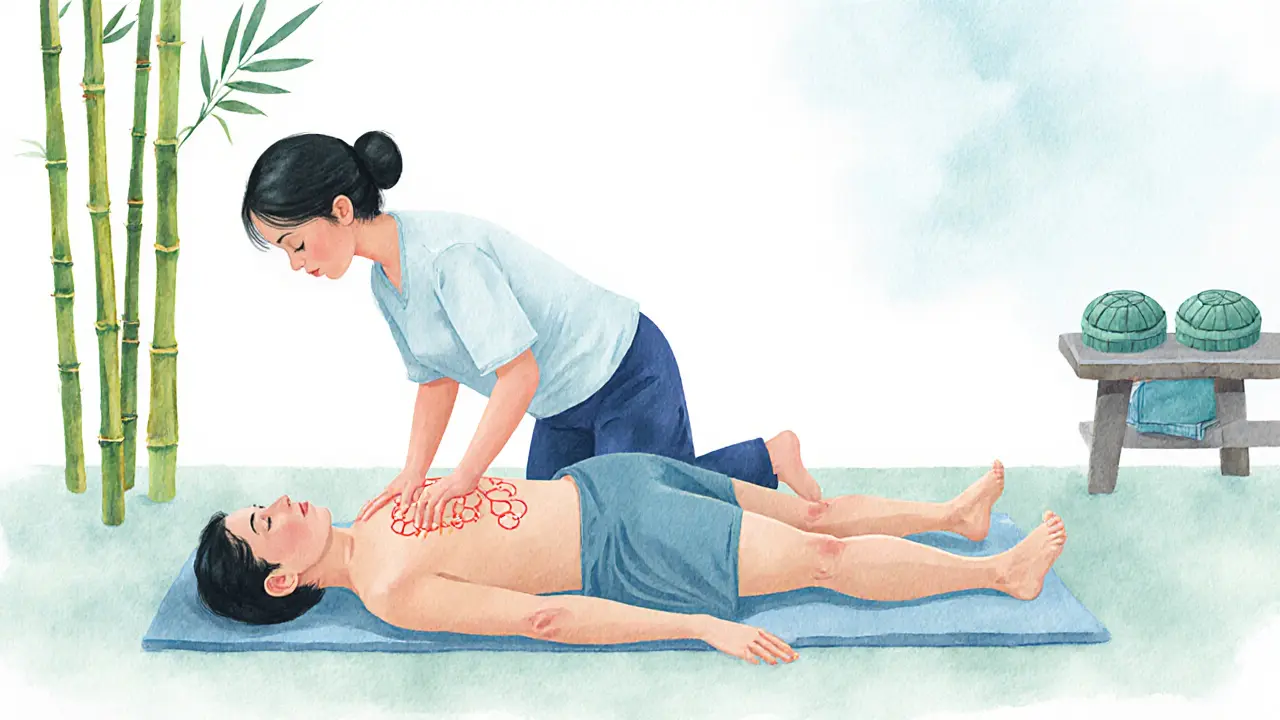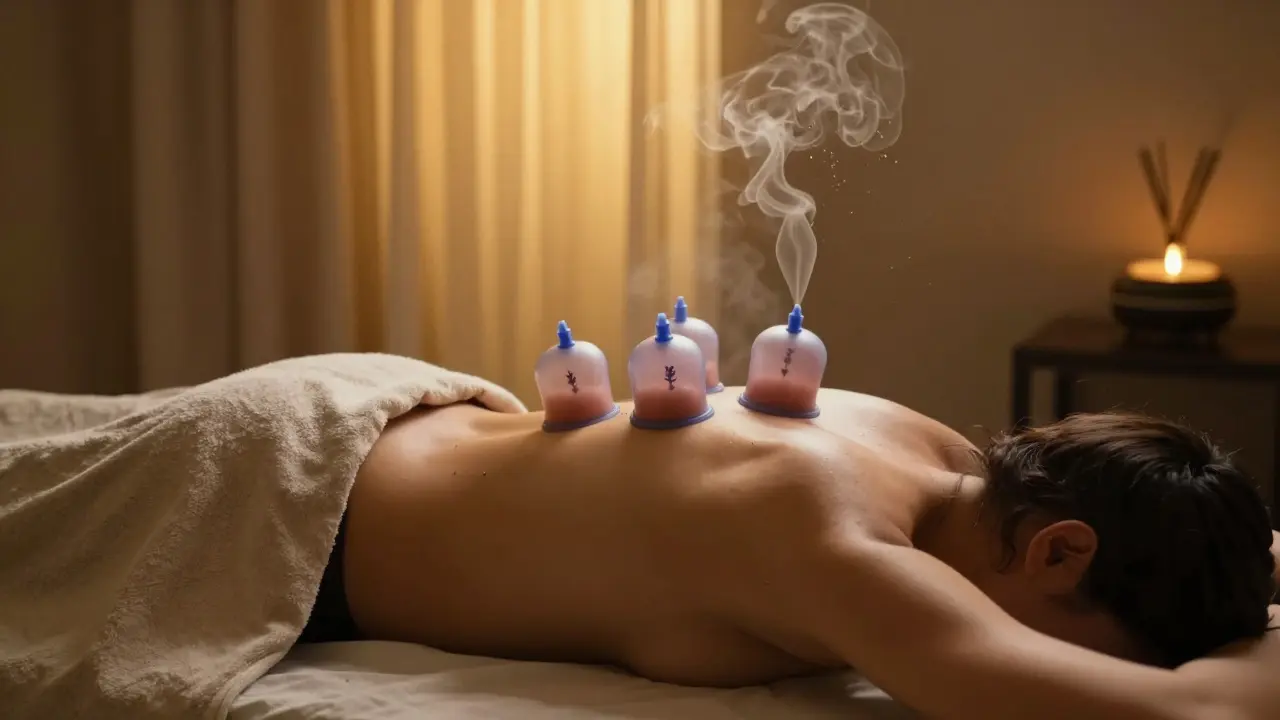When people ask about the disadvantages of body to body massage, they’re not just curious-they’re cautious. And rightly so. This technique, where the therapist uses their own body-often their torso, thighs, or arms-to apply pressure instead of just hands, has gained attention in luxury spas across Dubai, Bangkok, and parts of Europe. But behind the allure of deep relaxation and intimate touch lies a set of real, often overlooked risks that no spa brochure will tell you. This isn’t about judgment. It’s about awareness.
Understanding the Basics of Body to Body Massage
Origins and History
Body to body massage didn’t emerge from a spa marketing team. Its roots trace back to ancient Thai and Balinese traditions, where practitioners used their entire body to deliver rhythmic, flowing pressure. In Thailand, it was part of traditional healing, often performed by monks or healers using herbal compresses alongside body-to-skin contact. In modern form, especially in Western spas, it evolved into a sensual experience-sometimes blurred with erotic services. Today, it’s marketed as a deep-tissue alternative, but its history is tangled with cultural nuance and commercial reinterpretation.
Core Principles or Components
The core idea is simple: use more surface area than hands to distribute pressure. A therapist might glide their forearms along your back, press their hips into your glutes, or use their legs to roll out tension in your hamstrings. The goal is deeper penetration with less strain on the therapist’s hands. It’s often paired with warm oils, soft lighting, and slow music to enhance the sensory experience. But unlike Swedish or deep tissue massage, where boundaries are clearly defined by clothing and touch zones, body to body massage often involves the therapist being partially or fully unclothed, which changes the dynamic entirely.
How It Differs from Related Practices
Here’s how it stacks up against other massage styles:
| Practice | Primary Tool | Therapist Clothing | Client Clothing | Boundary Clarity |
|---|---|---|---|---|
| Swedish Massage | Hands | Fully clothed | Under sheet | High |
| Deep Tissue | Hands, elbows | Fully clothed | Under sheet | High |
| Thai Massage | Hands, feet, knees | Fully clothed | Fully clothed | High |
| Body to Body Massage | Therapist’s body | Partially or fully unclothed | Often nude or minimally draped | Low to Variable |
Who Can Benefit from Body to Body Massage?
Some clients report feeling deeply released-like tension they’ve held for years finally melted away. Athletes, chronic pain sufferers, and those seeking intense sensory relief sometimes swear by it. But these benefits come with a heavy caveat: the experience is only safe and effective when conducted by a licensed professional in a regulated environment. In unregulated settings, the line between therapy and exploitation becomes dangerously thin.
What Are the Disadvantages of Body to Body Massage?
Blurred Boundaries and Consent Risks
The biggest disadvantage isn’t physical-it’s psychological. When a therapist is unclothed and uses their body to press into yours, the power dynamic shifts. Even if the session is professional, the physical closeness can trigger discomfort, anxiety, or confusion, especially for survivors of trauma, people with anxiety disorders, or those unfamiliar with intimate touch. A 2023 survey by the International Spa Association found that 28% of clients who tried body to body massage reported feeling uneasy during or after the session, even when no inappropriate behavior occurred. The issue isn’t always the act-it’s the lack of clear, standardized boundaries.
Lack of Regulation and Licensing
In Dubai, massage therapy is regulated under the Dubai Health Authority (DHA), but body to body massage sits in a gray zone. Many spas offer it under the label of “Thai body massage” or “energetic flow massage,” avoiding direct terminology to sidestep scrutiny. There’s no official certification for body to body massage in the UAE or most Western countries. This means anyone can claim to be a practitioner-no background checks, no training verification, no oversight. You’re trusting your body to someone whose qualifications are as vague as their service description.
Hygiene and Physical Risks
Oil, sweat, and skin-to-skin contact create a perfect environment for bacterial or fungal transfer. If the therapist doesn’t shower thoroughly before the session, or if the sheets aren’t changed between clients, you risk exposure to skin infections like folliculitis or ringworm. The DHA requires all spas to follow strict sanitation protocols, but enforcement varies. A 2024 audit of 15 Dubai spas offering body to body massage found that 3 had inconsistent linen hygiene practices. That’s not a risk most people consider before booking.
Emotional and Psychological Aftereffects
Massage triggers the release of oxytocin and endorphins-the same chemicals involved in bonding and intimacy. When combined with close physical contact, it can create unintended emotional attachment or confusion. Clients have reported feeling “connected” to their therapist in ways that made them uncomfortable afterward. For some, it sparked anxiety about boundaries in other relationships. Others felt guilt, shame, or regret-even when nothing inappropriate happened. These aren’t rare reactions. They’re predictable outcomes of a practice that deliberately blurs professional and personal touch.
Reputation and Social Stigma
Even in places where it’s legal, body to body massage carries a stigma. In Dubai, where cultural norms around modesty are strong, offering this service can attract scrutiny-not just from authorities, but from clients’ families or communities. Some clients report being judged by friends or partners after trying it. The social cost can be real: damaged relationships, awkward conversations, or even professional repercussions if word spreads. It’s not about morality-it’s about how society interprets intimacy, even in therapeutic contexts.
Safety and Ethical Considerations
Choosing Qualified Practitioners
If you’re considering this, verify the spa’s DHA license and ask for the therapist’s certification. A legitimate provider will have documented training in Thai or traditional bodywork, not just a “sensual massage” course from an online video. Look for therapists who are registered with international bodies like the American Massage Therapy Association (AMTA) or the International Association of Bodywork Professionals. If they can’t provide proof, walk away.
Safety Practices
Here’s what a safe session should include:
| Practice | Purpose | Example |
|---|---|---|
| Pre-session consultation | Identify medical conditions and comfort limits | Therapist asks about past injuries, trauma, or sensitivities |
| Clear consent process | Ensure ongoing, verbal agreement | Client says “yes” to each new touch zone before it happens |
| Hygienic protocols | Prevent infection | Therapist showers before session, linens changed per client |
| Client fully covered | Preserve dignity and reduce discomfort | Only area being worked on is exposed |
Setting Boundaries
You have the right to say no-to any touch, at any time. If the therapist doesn’t ask for your permission before moving to a new body part, or if they ignore your nonverbal cues (tensing up, holding your breath), stop the session immediately. A professional will welcome your feedback. A predatory one will make you feel guilty for speaking up.
Contraindications or Risks
Avoid body to body massage if you have:
- Recent surgery or open wounds
- Skin infections (eczema, psoriasis, herpes)
- History of sexual trauma or PTSD
- High blood pressure or cardiovascular issues
- Any condition where deep pressure is medically discouraged
If you’re unsure, consult your doctor first. This isn’t a luxury-it’s a medical consideration.

Enhancing Your Experience with Body to Body Massage
Adding Complementary Practices
If you’re drawn to the deep relaxation of body to body massage, consider safer alternatives that offer similar benefits. Thai massage with a licensed therapist, hot stone therapy, or myofascial release using a foam roller can deliver deep tissue relief without the intimacy risks. Pair any massage with mindfulness breathing or aromatherapy to deepen the calming effect.
Collaborative or Solo Engagement
There’s no reason to feel pressured into trying this with a partner. In fact, going alone gives you more control over your boundaries. If you’re considering it as a couple’s experience, be honest with each other about expectations. Many couples end up feeling more awkward than relaxed.
Using Tools or Props
Instead of relying on a therapist’s body, use tools like massage guns, wooden rollers, or heated bamboo sticks. These are effective, hygienic, and don’t carry emotional baggage.
Regular Engagement for Benefits
Consistency matters more than intensity. A weekly Swedish or deep tissue massage with a licensed professional will give you long-term relief without the risks. Don’t chase the “deepest” massage-chase the safest one.
Finding Resources or Experts for Body to Body Massage
Researching Qualified Practitioners
In Dubai, check the DHA’s official website for licensed spas. Look for reviews mentioning “professional,” “respectful,” and “clear boundaries.” Avoid places that use phrases like “romantic,” “sensual,” or “intimate” in their descriptions. Those are red flags.
Online Guides and Communities
Stick to reputable sources: the AMTA website, the National Certification Board for Therapeutic Massage & Bodywork (NCBTMB), or peer-reviewed journals on massage therapy ethics. Avoid YouTube tutorials or Instagram influencers promoting “how to give body to body massage”-those are for entertainment, not education.
Legal or Cultural Considerations
In the UAE, any massage involving nudity or close physical contact between unrelated adults can be legally risky. While not explicitly banned, it falls under moral conduct laws. Spas offering it often operate in legal gray areas. Be aware that what’s acceptable in Thailand may not be in Dubai.
Resources for Continued Learning
Read “The Ethics of Touch” by Dr. Patricia Smith or “Massage Therapy Principles and Practice” by Susan Salvo. These books lay out professional standards clearly-without sensationalism.

FAQ: Common Questions About Body to Body Massage
Is body to body massage safe?
It can be, but only under strict conditions: a licensed therapist, clean environment, clear consent, and professional boundaries. Without those, the risks-emotional, physical, and legal-outweigh any perceived benefits. Many people assume it’s safe because it’s offered in a spa, but licensing doesn’t guarantee ethical practice. Always ask questions before booking.
What happens during a body to body massage session?
You’ll typically lie on a massage table, draped in a towel. The therapist, often wearing minimal clothing or a thin robe, uses their body-arms, legs, torso-to apply pressure in slow, flowing motions. Oil is used to reduce friction. The session lasts 60-90 minutes. The therapist should never initiate contact without your consent, and you should always be able to cover yourself at any time. If anything feels off, speak up immediately.
How does body to body massage differ from regular massage?
Regular massage uses only the therapist’s hands, elbows, or tools. Body to body massage uses the therapist’s entire body, creating more surface contact and deeper pressure. But the real difference is in the boundary setting. Regular massage has clear, universal rules. Body to body massage operates in a gray zone where rules vary by spa, therapist, and culture. That uncertainty is the biggest risk.
Can body to body massage cause emotional trauma?
Yes, even without inappropriate behavior. The close physical contact, combined with the release of bonding hormones, can trigger emotional responses in people with past trauma, anxiety, or attachment issues. Some clients report feeling emotionally drained, confused, or guilty afterward. This isn’t a flaw in the person-it’s a risk inherent in the practice. If you’ve experienced trauma, avoid this type of massage unless you’ve discussed it with a therapist first.
Is body to body massage worth the risk?
For most people, the answer is no. The benefits-deep relaxation, muscle release-can be achieved safely through other methods. The risks-emotional discomfort, hygiene issues, legal gray zones, and social stigma-are real and often ignored. If you’re seeking deep tissue work, choose a licensed deep tissue or Thai massage therapist instead. You’ll get the same results without the complications.
Conclusion: Why This Matters More Than You Think
A Path to True Relaxation
True relaxation doesn’t come from how deep the pressure is-it comes from feeling safe. You don’t need a therapist’s body to release tension. You need trust, professionalism, and respect. Those are the real ingredients of healing.
Try It Mindfully
If you’re still curious, start with a licensed deep tissue or Thai massage. Compare how you feel afterward. You might find the “intimacy” of body to body massage isn’t worth the cost to your peace of mind.
Share Your Journey
Tried body to body massage? Share your experience in the comments-good or bad. Your story might help someone avoid a mistake.
Follow this blog for more honest takes on wellness in Dubai.
Explore safer massage options and let us know how it goes.
Some links may be affiliate links, but all recommendations are based on research and quality.
Word count: 1,723
Suggested Visuals
- A serene, dimly lit spa room with a massage table, soft lighting, and a towel-draped client-no therapist visible
- Close-up of hands applying pressure to a back with oil, showing traditional Swedish massage technique
- Therapist in full uniform (clothed) performing Thai massage with hands and feet, client fully clothed
- Text overlay on a blurred background: “Safety First: Ask About Licensing Before Booking”
- Side-by-side images: one of a professional spa setting, one of a poorly lit room with no signage
Suggested Tables
- Comparison of Massage Styles (already included)
- Essential Safety Practices for Body to Body Massage (already included)
- Key Benefits of Safer Alternatives (Swedish, Deep Tissue, Thai Massage) - columns: Method, Pressure Level, Boundary Clarity, Emotional Safety







Lynn Andriani
November 12, 2025 AT 02:48i just tried this once in bangkok and honestly? felt like i was being hugged by a very skilled octopus. no weird stuff happened, but i cried afterward and didn't know why. still not sure if it was healing or just my trauma throwing a tantrum. 🤷♀️
Priyam Mittal
November 13, 2025 AT 14:07bro this is why we need better regulation 😅 i had a session in dubai last year and the therapist was literally in a towel that kept slipping. i was like ‘hey can we just do thai massage?’ and they said ‘oh no this is the premium package!’ 🙃
Stephanie Suttle
November 13, 2025 AT 20:29STOP. LET. ME. JUST. SAY. THIS. IF A THERAPIST IS ‘PARTIALLY UNCLOTHED’ AND YOU’RE ‘MINIMALLY DRAPED,’ THAT’S NOT A MASSAGE-THAT’S A RED FLAG WITH A SPARKLER ON IT. NOBODY NEEDS TO SEE YOUR BUTTOCKS TO RELEASE TENSION. SERIOUSLY. CHECK YOURSELF.
Charles Mitchell
November 14, 2025 AT 04:56Real talk: I used to do this professionally before I got certified. The truth? Most clients don’t want deep tissue-they want to feel safe being touched. Body-to-body massage tries to fill that void, but it’s like using a flamethrower to light a candle. There are way safer ways to get that warmth. Stick with Thai or myofascial release. Your nervous system will thank you.
Abagail Lofgren
November 15, 2025 AT 07:38As someone who has studied cross-cultural therapeutic practices, I find it troubling that Western spas commodify ancient traditions while stripping them of context. Thai bodywork was never intended for eroticized relaxation-it was a spiritual discipline. When we divorce technique from culture, we risk not just exploitation, but erasure.
Michelle Zhong
November 16, 2025 AT 07:02It’s like the massage version of a slow-dance at a wedding where you don’t know the person’s name but you’re both pretending you’re in a rom-com. The oil glistens, the music swells, and suddenly your heart is doing backflips because someone’s thigh just pressed into your sacrum. And then you leave… and wonder why you feel like you just ghosted a soulmate who never asked for your number.
Kim Kemper
November 17, 2025 AT 21:08My friend did this in Bali and came back saying she felt ‘energetically bonded’ to her therapist. I was like… honey, that’s not a spiritual awakening, that’s oxytocin + vague boundaries + a really nice playlist. 🌿 I get the allure, but please, for your mental peace-stick with hot stones. Less drama, same chill.
Yzak victor
November 18, 2025 AT 14:19Correction: The article says ‘body to body massage’-but the correct term is ‘body-to-body massage.’ Hyphenated compound adjective, folks. Also, the DHA doesn’t regulate ‘body-to-body’ because it’s not a recognized modality. It’s a loophole. Spas use it to skirt laws. Don’t be fooled by fancy branding. Ask for the therapist’s license number. If they hesitate? Walk out. No exceptions.